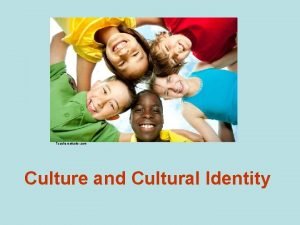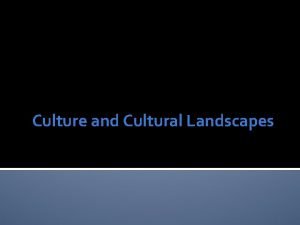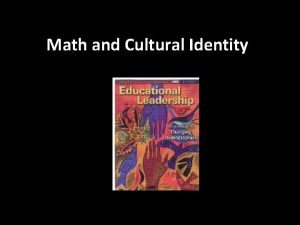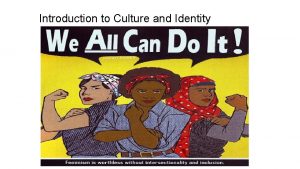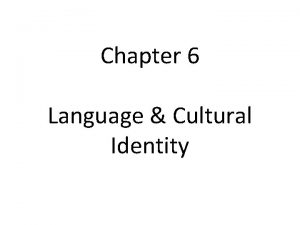Culture and Cultural Identity The importance of identity







- Slides: 7

Culture and Cultural Identity

The importance of identity Who am I? I am… I am… Multiple Identities

Definition of Identity: “the reflective self-conception or self-image that we each derive from our family, gender, cultural, ethnic, and individual socialization process” (Ting-Toomey).

Three levels of identity (Hall): Personal (what makes us unique) Relational (our relationships with others) Cultural, Communal or Social (large-scale communities such as nationality, ethnicity, gender, religious or political affiliation)

Selected Social Identities Racial Identity – a socially constructed idea that still persists in the United States Ethnic Identity – derived from a sense of shared heritage, history, traditions, values, area of origin, and sometimes language Gender Identity (different than sexual identity) – how a particular culture differentiates masculine and feminine social roles National Identity – the nation/country one was born into ( or a sense of place)

Identity in Intercultural Interactions “Cultural identity is a focal element in intercultural communication” (Imahori and Cupach). In intercultural communication, participants will have to search for a middle ground between their different communication styles. With so many intercultural marriages, many US youths consider cultural diversity as a normal part of social life. “There is a growing willingness—and ability—to cross cultures, where one’s personal identity is shaped more by cultural preferences than by skin color” (Kotkin and Tseng).

The dark side of identity Stereotypes- categorization that mentally organizes your experience with, and guides your behavior toward, a particular group of people. Prejudices – are deeply held negative feelings associates with a particular group (anger, fear, aversion, anxiety). Racism – an extension of stereotyping and prejudice. The belief that one race is inherently superior to another; “genetic endowment. ” Ethnocentrism – one’s own culture is superior to any other.








